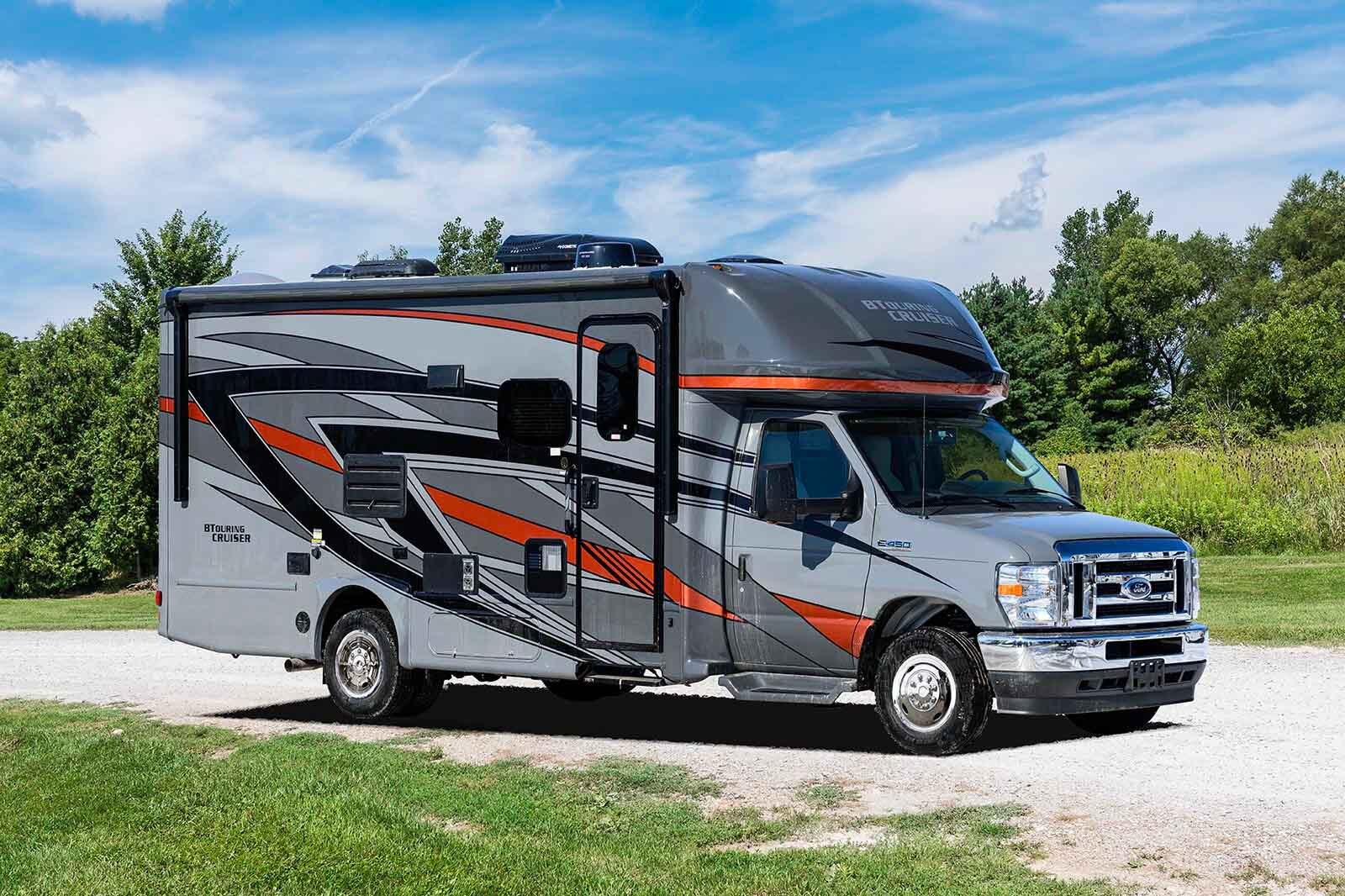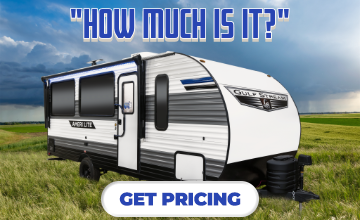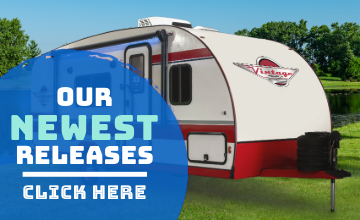Solar Panel Basics
(Back to Table of Contents)
A growing number of RV owners are taking advantage of the technological advances, efficiency improvements, and cost savings available in the latest generation of solar power systems designed for RVers. Here’s a discussion of the basics of solar panels and solar power systems that can be your foundation for further investigation of the options you’ll find if you consider adding solar power to your rig.
What is a solar panel?
A solar panel is a specially formulated matrix of the element Silicon; the second-most common mineral found on Planet Earth, and a component of many common rocks, sand, concrete, glass, and computer chips. The crystalline form of Silicon has the property of generating electron flow when exposed to light, and that’s the electricity produced by solar panels.
There’s a direct connection between the physical size of panels and the amount of power they produce. That’s why solar panels are available in a huge range of sizes, small enough to power a wristwatch, and big enough to power a whole residential neighborhood.
Virtually all solar power systems consist of three components: one or more solar panels, a solar power controller, and the wiring needed to connect the components. When shopping, keep in mind that systems often have proprietary hardware, connectors, and other components. Make sure your panels, cables, connectors and controller are all compatible.
RV owners are looking for a solar power solution that blends all of the factors of size, cost, power output, and durability. It’s important to realize that the solution will vary greatly among RVers, based on their needs, wants, budget, and expectations. There’s a fair amount of flexibility in solar panel systems, so you can often add and change components if your first choice needs to be upgraded or revised in the future.
What’s better? Portable or Roof-Mounted Panels
One of the first options to consider is whether you want portable “ground-based” solar panel(s) or fixed, roof-mounted panel(s).
Portable panels can be set up on your campsite using a variety of supports, and are connected to your unit with a power cable of suitable length. The main advantage of this approach is that the panels can be located on your site where the sun shines while your RV is parked to take advantage of maximum shade. The portable panels don’t require professional installation, and don’t require you to drill holes in your roof for cables and brackets.
Obviously, portable panels provide power only after you have parked and plugged them into the RV. Among other disadvantages of portable panels are the effort needed to set them up and connect them, the hazard the panels and cables create in the limited real estate of the campsite, and the storage space needed to transport the panels in the RV from campsite to campsite.
Roof-mounted panels are permanently attached with brackets or adhesives to the roof of your RV, and are hard-wired to the RV electrical system. Professional installation of a roof-mounted solar power system is strongly recommended, to ensure that holes drilled for wiring and brackets are properly sealed, and cables are properly connected to the existing electrical system.
Because they are permanently installed, roof solar panels don’t need to be deployed or set up like portable panels. They don’t take up interior storage space, and don’t use an exposed cable to connect to your trailer. Solar panels designed for a permanent roof installation are build to standards that enable them to weather environmental extremes encountered outdoors. The typical RV roof often has the space needed to add additional panels if you decide you want to increase solar power generation. With the right setup, roof-mounted panels can provide power while you are driving, to top off battery charges, and for other purposes.
Contrary to popular belief, the charging capacity of solar panels in open shade is just slightly less than the charge in full sun, so it is seldom necessary to compromise your choice of camping site to receive adequate solar power.
More Solar Panel Options to Know About
Solar panel technology is changing constantly, especially as demand increases and the use of panels expands. New designs are getting lighter, thinner, more flexible, and less expensive - All of these are positive developments, but it’s important to remember the environmental conditions that solar panels experience, and look for technology designed to withstand extreme conditions.
How Much Solar Power Is Enough?
Like so many aspects of camping, solar power includes limits on the resources you have at your disposal. Ultimately, living with less in terms of material luxury is one of the best parts of camping, as it allows campers to focus more clearly on natural surroundings, the balance of nature, the connection with the environment, and the importance of non-material values.
In virtually all installations, your solar panel(s) are connected to your RV battery, and refill the power your battery uses to operate 12V systems, fixtures, and appliances. It’s as if your battery was a bucket of water continually being drained and refilled. Any 12V electrical item connected to your battery can continue to be used, as long as the electrical power produced by the solar panel can replace the electrical power being taken from the battery.
Most RVs are also set up to allow 12V power to be converted to 110V power, to run appliances that plug into standard household outlets. Generally speaking, 110V appliances use far more power than 12V appliances, and many will quickly drain the battery “bucket” of all power. Your solar panel(s) can replace this power drain, but there is a limit as to how adequately and how quickly they can produce the power being used.
Some common RV appliances like air conditioners (more on them later), some TVs, microwaves, etc. draw too much power to be operated on a basic solar power system.
But back to the question - How much solar power is enough? The only reliable way to answer this is to create an “Energy Budget,” by listing the power requirements of your RV’s electrical appliances, lights, and accessories. This will take some time and research, (there are many online examples) but it’s the most appropriate way to estimate how much power you want (and/or need). If you create that “Energy Budget,” you’ll quickly realize that you have choices to make about how much power you need. Those choices will shape some of your camping activities - You may decide to listen to the radio when you can’t power up the TV. You may use the gas range to pop popcorn instead of using your electric corn-popper.
Where to begin? A 100-watt panel is the basic unit of RV solar panel systems, and will provide power for important 12V systems (water pressure pump, interior lights, power hitch, USB outlets, etc.) it’s also fine for maintaining/charging your RV battery. If you’d like more solar power, you’ll likely add a second (or third) 100-watt panel. The number of panels you can use is ultimately limited by the space you have to mount them on your RV roof.
You can see how useful and important the idea of the “Energy Budget” becomes, as you look to use solar power to fulfill more and more of your power requirements. That means doing some research to establish the wattages used by electrical items, and applying a bit of strategy and discipline when you flip switches.
Another key part of your solar power system is a controller that monitors and manages the flow of electricity from the panel(s) to your battery. Good solar power controllers have an LED display to provide real-time info on the amount of power/voltage being produced by your solar panel(s), and show the charge status of your battery. You can see how important the controller and the battery are, because the controller directs all of the output of your panels to replenish the charge of the battery as needed, while the battery then distributes electricity to all 12V circuits in your RV.
Keep in mind that all of the power provided by solar panels is delivered to your RV battery, and is part of the 12V power system. Any power provided by solar panels to operate 110V outlets or appliances actually travels to the battery, then to an inverter, where the 12V battery output is converted to 110V power. It’s also important to know that the power demands of many 110V appliances are beyond the capabilities of a simple one- or two-panel (100-200 watt) solar power system. Chief among these high-demand appliances is your RV air conditioner.
The truth about your air conditioner…
While it may be theoretically possible to build a solar power system to handle your factory-installed RV air conditioner, it takes many solar panels, multiple batteries, and some sophisticated electrical circuitry that result in costs and complexity that may be difficult to justify.
Manufacturers of RV air conditioners know that a 12V/solar powered air conditioner is one of the most-wanted RV appliances, and are working to provide a solution.













